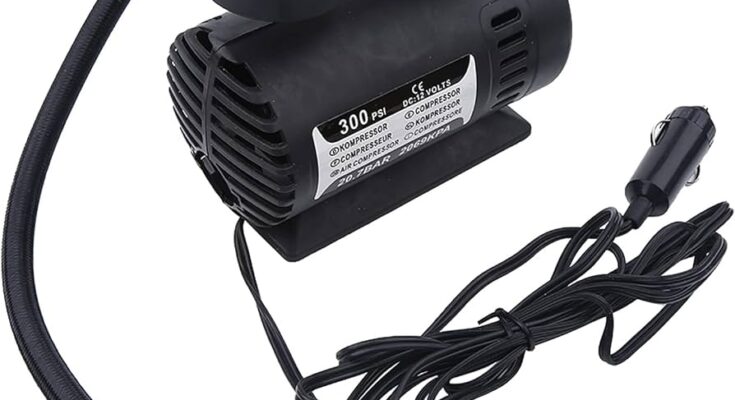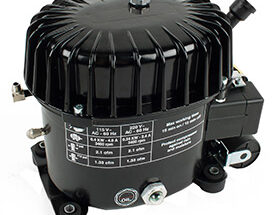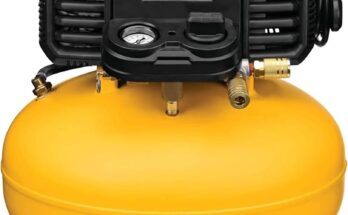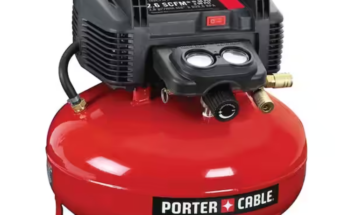When you think of air compressors, the image of bulky machines dominating a garage might come to mind. However, small air compressors defy this stereotype by offering compact size without compromising on power and efficiency. Whether you’re a DIY enthusiast, a hobbyist, or a professional needing portable pneumatic power, these little machines are game-changers.
Introduction to Small Air Compressors
Small air compressors are not just miniaturized versions of their larger counterparts; they’re precision tools designed for versatility. They’re prized for their ability to deliver compressed air in a portable package, making them ideal for tasks where mobility and space are crucial factors.
Benefits of Using Small Air Compressors
One of the standout advantages of small air compressors is their portability. Unlike their larger cousins that are often stationary, these compact units can be easily moved from one job site to another or even within a workshop without hassle. This makes them perfect for tasks where you need to navigate tight spaces or move frequently.
Another key benefit is their efficiency. Despite their size, small air compressors are adept at powering pneumatic tools like nail guns, paint sprayers, and inflators. They provide sufficient CFM (Cubic Feet per Minute) to handle various pneumatic tasks, from inflating tires to running airbrushes for delicate artwork.
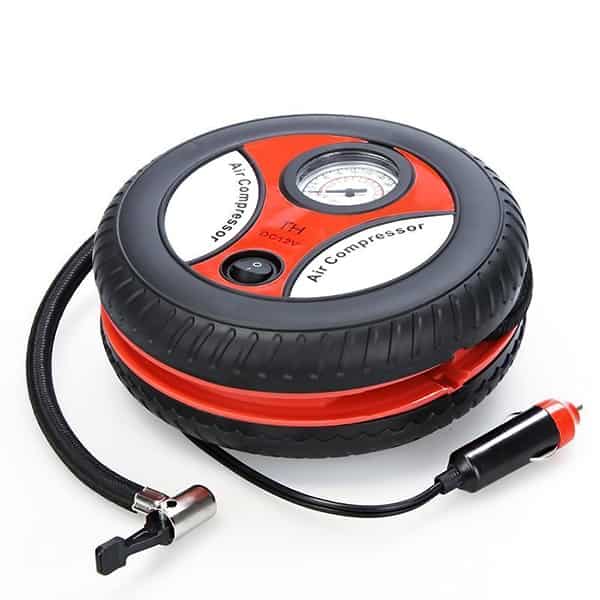
Photo By: shopse.pk
Key Features to Look for in Small Air Compressors
When selecting a small air compressor, several essential features can significantly impact its performance and suitability for your needs. One of the primary considerations is the CFM rating, which indicates the volume of air the compressor can deliver per minute. For tasks requiring continuous airflow, such as operating pneumatic tools or inflating large items, a higher CFM rating is essential to maintain efficiency and productivity.
Another critical feature to consider is the tank size. While small air compressors are generally designed with compact tanks to enhance portability, the tank capacity affects the compressor’s ability to store compressed air. For intermittent use or light-duty tasks, a smaller tank may suffice, whereas larger tanks provide longer operational times between refills, ideal for continuous-use scenarios.
For users concerned about noise levels, opting for an oil-free small air compressor is recommended. Oil-free compressors operate quieter than oil-lubricated models and require less maintenance, making them suitable for indoor or noise-sensitive environments. This feature ensures you can work without disturbing others while maintaining efficient performance.
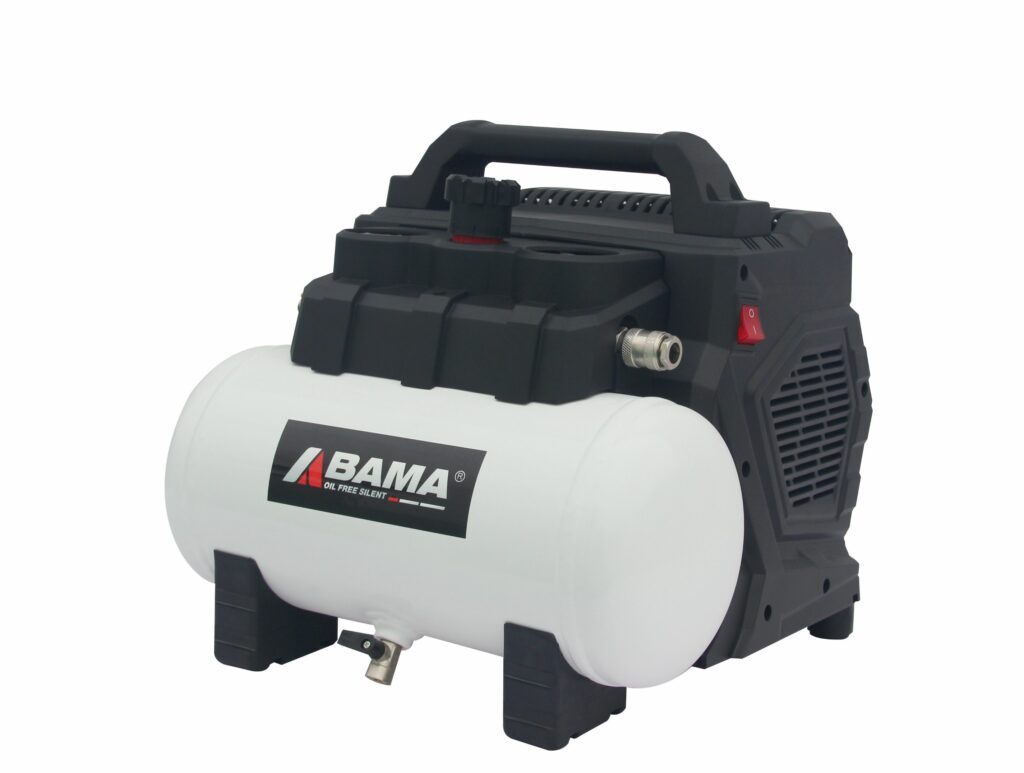
Photo By: image.made-in-china.com
Top 5 Small Air Compressors Reviewed
To help you narrow down your options, we’ve compiled a list of the top 10 small air compressors available on the market today. Each compressor is evaluated based on its performance, durability, and suitability for various applications, ensuring you find the perfect match for your specific needs.
Model A: Best Overall Performance Model A stands out for its robust performance and compact design. It boasts a high CFM rating, ensuring sufficient airflow for various pneumatic tools and tasks. Its durable construction makes it suitable for both professional and DIY use. However, users should note that it operates slightly louder than some competitors in its class.
Model B: Budget-Friendly Option Model B offers affordability without sacrificing essential features. It provides adequate CFM for light-duty tasks such as inflating tires or powering small pneumatic tools. While its tank capacity is limited, it remains a solid choice for occasional users seeking value and reliability.
Model C: Ultra-Quiet Operation Model C excels in noise reduction with its virtually silent operation and oil-free design. Ideal for home workshops or indoor use, it ensures minimal disturbance while delivering reliable performance. However, its lower CFM may not meet the demands of heavy-duty applications, making it more suited for tasks that prioritize noise reduction over maximum airflow.
Model D: Compact and Portable Model D is designed for mobility, featuring a lightweight and ergonomic design. It’s perfect for on-the-go projects where portability is paramount. While its compact size makes it convenient, users should consider its lower CFM output, which may limit its suitability for continuous use compared to larger models.
Model E: Heavy-Duty Performance Model E stands out with its high CFM rating and large tank capacity, making it ideal for industrial settings or demanding applications that require sustained airflow. Its robust build quality ensures durability under rigorous conditions. However, its bulkier size may pose challenges in terms of mobility compared to smaller, more portable models.
FAQs About Small Air Compressor
Q: Are small air compressors powerful enough for serious tasks? A: Absolutely! Don’t let their size fool you. Small air compressors today are engineered to deliver impressive performance, suitable for a wide range of applications from inflating tires to powering pneumatic tools. They may have lower CFM compared to larger models but can still handle most tasks effectively.
Q: What should I look for when buying a small air compressor? A: Key features to consider include CFM rating, tank size, and noise levels. A higher CFM means more air output, essential for continuous operation with tools. Tank size determines how long you can operate before refilling. Opting for an oil-free compressor reduces maintenance and noise, ideal for indoor use.
Q: Are small air compressors noisy? A: It depends on the model. Oil-free small air compressors tend to operate quieter than oil-lubricated ones. If noise is a concern, look for models specifically designed for quiet operation, often labeled as “ultra-quiet” or “silent.”
Q: Can small air compressors be used indoors? A: Yes, especially oil-free models that operate quietly. They’re perfect for indoor use, such as home workshops or garage settings where noise reduction is important. Just ensure adequate ventilation to disperse heat generated during operation.
Q: What are the benefits of choosing a small air compressor over a larger one? A: Portability is the major advantage. Small air compressors are lightweight and easy to move around, making them ideal for mobile professionals or DIY enthusiasts working in different locations. They also take up less space and are easier to store.
Q: How do I maintain a small air compressor? A: Regular maintenance ensures longevity and reliable performance. Tasks include checking and changing oil (if applicable), cleaning or replacing air filters, draining moisture from the tank, and inspecting hoses for leaks. Consult your user manual for specific maintenance instructions.
Q: Can small air compressors inflate car tires? A: Yes, small air compressors are perfect for inflating car tires. Look for models with adequate CFM and a pressure gauge that meets your vehicle’s tire requirements. They’re convenient for roadside emergencies or routine tire maintenance at home.
Q: What safety precautions should I take when using a small air compressor? A: Always wear appropriate eye and ear protection when operating a compressor. Follow manufacturer’s guidelines for setup, use a grounded outlet, and never exceed the compressor’s recommended operating pressure. Regularly inspect hoses and fittings for wear and replace damaged parts promptly.
